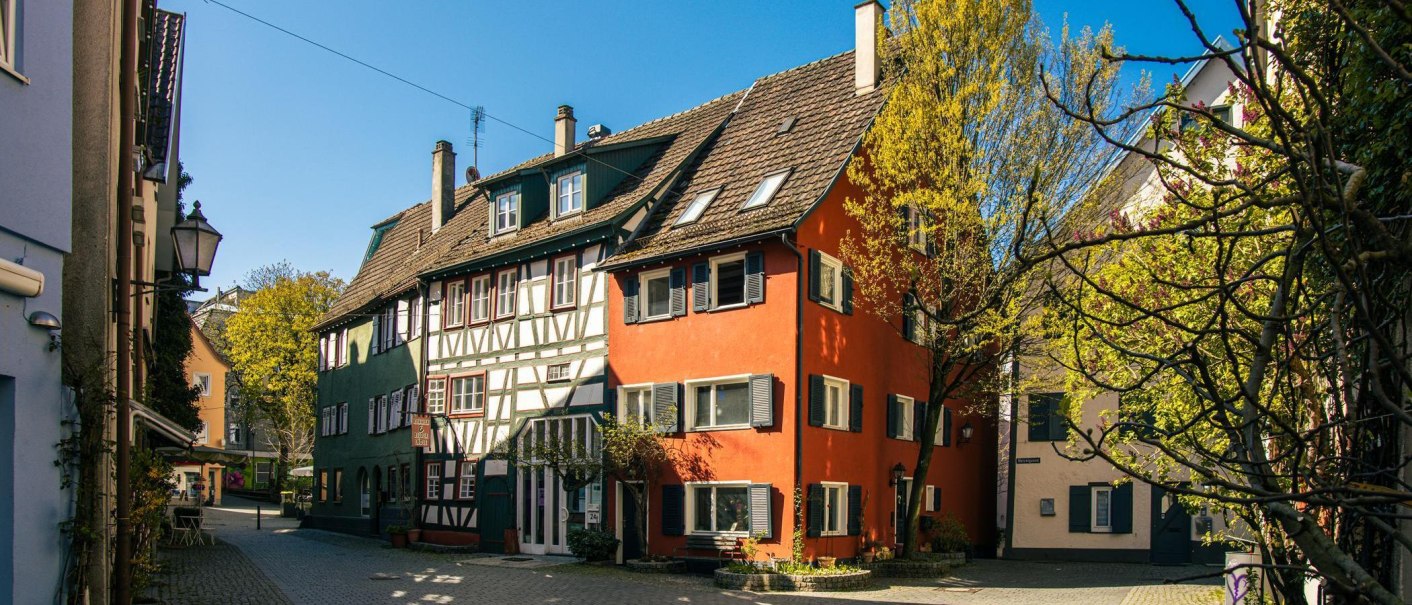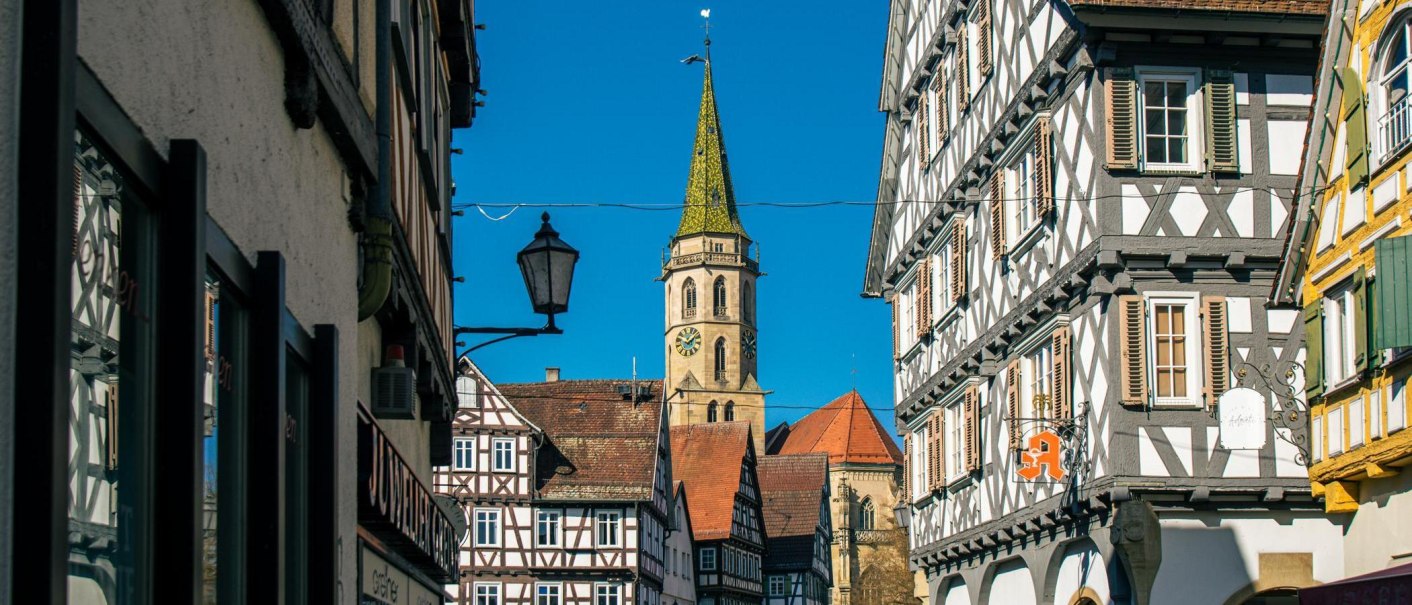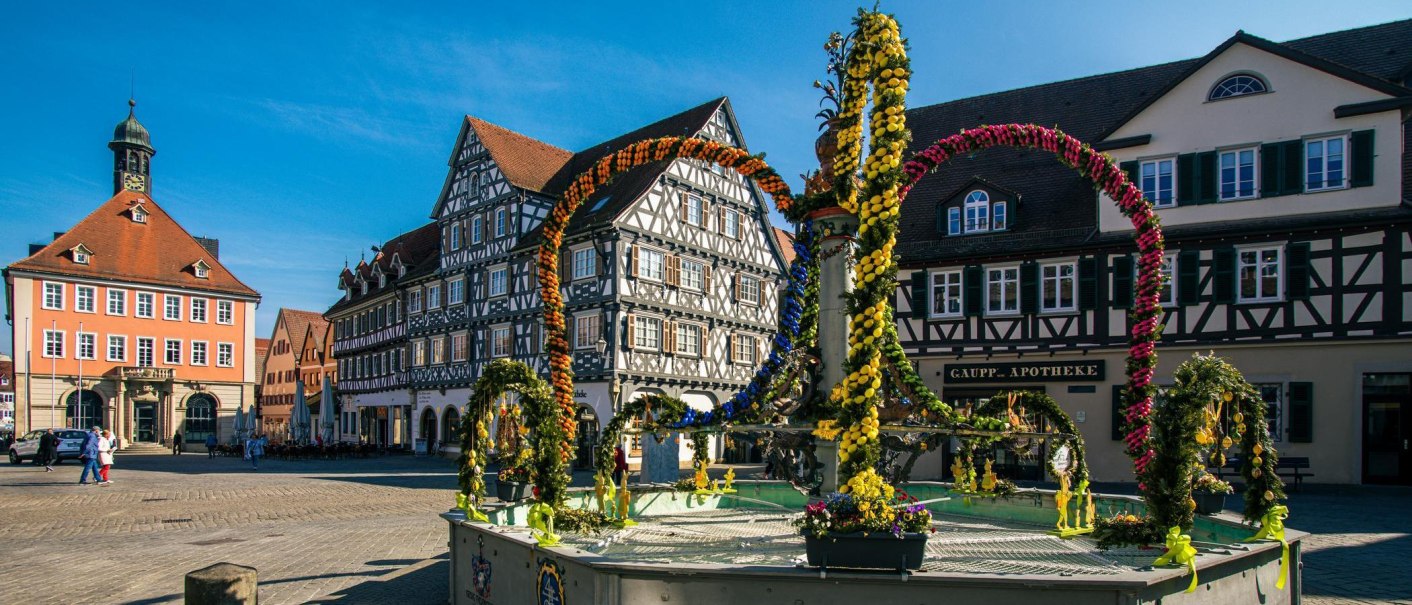Schorndorf
Schorndorf lies to the east of Stuttgart in the Rems Valley, at the foot of the Swabian Forest.
History
"From stone axe to automobile" - the history of Schorndorf
The settlement of the Middle Rems Valley dates back over 5000 years to the Neolithic age, as numerous finds, such as carefully made stone axes, indicate. In the 2nd and 3rd centuries A.D. the area formed part of the agricultural hinterland of the Roman border defences (Limes). Traces were also found of the Alemanni, who occupied the area from the middle of the 3rd century A.D. onwards, the most notable finds being two women's graves with burial offerings.
Schorndorf was first documented in the year 1235. Around 1250 Count Ulrich I of Württemberg, having seized part of the Staufen estates, founded a town to the east of the original settlement (most probably near where the church now stands), which shortly afterwards was fortified with walls. A century later, the original village was also enclosed by the ring wall. Up to the beginning of the 19th century, Schorndorf was not only the seat of Württemberg's administration but also a border fortress, responsible for defending its eastern boundary.
From 1538 onwards, Duke Ulrich had the fortress enlarged and modernised with the addition of ramparts, a fosse and five bastions. Owing to its strategic military and political position, Schorndorf was frequently involved in hostilities. In 1514 the peasants of the "Armer Konrad" ("Poor Konrad") uprising occupied the town - some of their leaders' heads were soon to roll outside its gates. In 1634, during the Thirty Years War, the town caught fire after bombardment by the troops of the Catholic League and was more or less completely reduced to ashes. In 1688 the townspeople managed to prevent its being surrendered to the French army, on which occasion the "Wives of Schorndorf" in particular distinguished themselves.The story goes that under their leader, the legendary Barbara Künkelin, they locked up the town council, who had already decided to hand over the town. Thanks to the courageous intervention of these women, the town was spared the fate that capitulation would have brought with it. From 1811 onwards the ramparts, including the fosse, bastions and medieval town walls, were torn down because they were restricting the town's expansion.
In the 16th century, Schorndorf was the second richest town in Württemberg after Stuttgart. Its viniculture, with six wine presses, and its wine and salt trade, as well as numerous other businesses, brought considerable prosperity. This came to an end in the 19th and 20th centuries, when the commercial importance of wine growing increasingly dwindled. At the same time, industrialisation made slow progress: around 1850 there were only four factories, all of which had evolved from existing trades. However, industrial development picked up when the Rems Valley railway line opened in 1861, and by the turn of the century there were several companies in Schorndorf trading successfully further afield. These included brickworks (privately owned since 1822), Gabler's thimble factory (1824), Breuninger's leather goods factory (1843), Arnold's metal furniture factory (1871), Birkel's noodle factory (1896), and a china factory (1904).
Schorndorf's Latin School continued to enjoy a good reputation, with a schoolmaster mentioned as early as 1357. Many of its pupils later became famous, for example
Sebastian Schertlin von Burtenbach (1496-1577, the lansquenet leader), Jakob Schegk, known as Degen, (1511-1587, professor of medicine and philosophy in Tübingen), Melchior Nicolai (1578-1659) and Balthasar Raith (1616-1683), both professors of theology in Tübingen, Josias Weitbrecht (1702-1747, professor of anatomy in St. Petersburg), Karl Friedrich Reinhard (1761-1837, French diplomat and count, a friend of Goethe's), Ferdinand Heinrich August Weckherlin (1767-1828, Württemberg's minister of finance) and Reinhold Maier (1889-1971, Baden-Württemberg's first minister president). Schorndorf's most prominent citizen, Gottlieb Daimler (1834-1900), attended the secondary school; it was his groundbreaking invention - the first high-speed light petrol engine - that made automobile construction possible.




